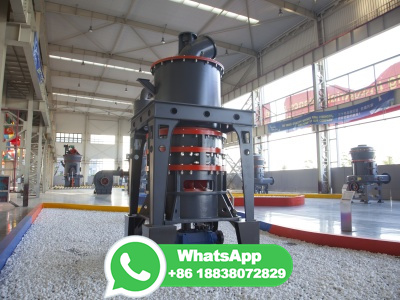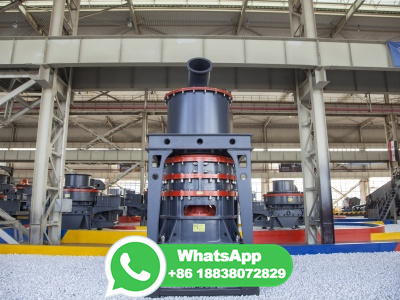
The formation of coal occurs over millions of years via a process known as carbonation. In this process, dead vegetation is converted into coal which is found to be carbonrich under very high temperature and pressure. Coal is also called as black gold. Now let's discuss about how coal is formed. The formation of coal occurs over ...
WhatsApp: +86 18203695377
Most of the coal burned in US power plants is bituminous or subbituminous coal. A fifth type, called metallurgical (or "coking") coal, is used for steelmaking. All types of coal also contain sulfur, which, when burned, releases toxic air pollution. Sulfur content is determined by the conditions under which the coal is formed.
WhatsApp: +86 18203695377
Fill in the blanks.(a) The slow process of conversion of dead vegetation into coal is called _____.(b) Coal and petroleum are formed from the dead remains of organisms and are known as _____.(c) The black thick liquid with _____ smell is known as coal tar.(d) During the processing of coal to get coke, coal tar and _____ are also obtained.(e ...
WhatsApp: +86 18203695377
Coking. Coking coal is an essential raw material for the production of iron and steel. Coke is a solid carbonaceous residue formed from coking coal (a lowash, lowsulphur bituminous coal, also known as metallurgical coal), which is used in make steel and other iron products [].Coke is produced by burning coal at temperatures up to 1000 °C in the absence of oxygen to remove the volatile ...
WhatsApp: +86 18203695377
Specifically, peat compacts to form solid rock through a process called lithification, producing lignite (brown coal, a lowquality form of coal). With increasing heat and pressure, lignite turns to subbituminous coal and bituminous coal. Lignite, subbituminous coal, and bituminous coal are considered sedimentary rocks because they from from ...
WhatsApp: +86 18203695377
There are two main phases in coal formation: peatification and coalification. Bacterial activity is the main process that creates the peat during peatification. Increasing temperature and pressure from burial are the main factors in coalification. [2] To form coal, the following steps are followed (Figure 2 illustrates these steps): [5] [6]
WhatsApp: +86 18203695377
It takes approximately 100 million to 400 million years to form coal from the dead and the decaying plant remains. Coal is one of the most important fossil fuel known to humankind. Ever since the discovery of fire, coal has been instrumental in building up of several human civilizations. But since coal is a nonrenewable resource and the whole ...
WhatsApp: +86 18203695377
Origin and occurrence of coal. Coals are obtained by natural 300 million years ago the earth had dense forests in low lying wetland to natural processes,like flooding, these forests buried under soil deposited over them they were compressed.
WhatsApp: +86 18203695377
Reading: Coal. Figure 1. Bituminous coal. Coal (from the Old English term col, which has meant "mineral of fossilized carbon" since the thirteent century)is a combustible black or brownishblack sedimentary rock usually occurring in rock strata in layers or veins called coal beds or coal seams. The harder forms, such as anthracite coal, can ...
WhatsApp: +86 18203695377
A coal mining car at Lackawanna Coal Mine in Scranton, Pennsylvania Coal miners exiting a winder cage at a mine near Richlands, ia in 1974 Surface coal mining in Wyoming, A coal mine in Frameries, Belgium. Coal mining is the process of extracting coal from the ground or from a mine. Coal is valued for its energy content and since the 1880s has been widely used to generate electricity.
WhatsApp: +86 18203695377
Coal is called a fossil fuel because it was formed from the remains of vegetation that grew as long as 400 million years ago. It is often referred to as "buried sunshine," because the plants that formed coal captured energy from the Sun through photosynthesis ... Coal formation is a continuing process (some of our newest coal is a mere 1 ...
WhatsApp: +86 18203695377
Name the products obtained and their uses when coal is processed in industry. Coke is almost pure form of carbon. (T / F) Learn the concepts of Class 8 Chemistry Coal and Petroleum with Videos and Stories. Describe the formation, appearance and uses of coal and its derivatives.
WhatsApp: +86 18203695377
Solution. Verified by Toppr. Dead remains of plants got buried under the earth millions of years ago. Due to intense heat and pressure inside the earth they got converted into coal. The process of conversion of dead remains of plants into coal is called carbonization.
WhatsApp: +86 18203695377
Coal is formed by the bacterial action on dead vegetation. Over time, under high pressure and high temperature, dead plants got slowly converted to coal. Since coal mainly contains carbon this process of conversion is called carbonisation.
WhatsApp: +86 18203695377
Form of Energy: Chemical. Coal is the most carbonintensive fossil fuel and a huge contributor to climate change, air pollution, and land disruption. It is a combustible, rocklike hydrocarbon mined from the earth that is burned to convert chemical energy to heat. A widelyavailable and nonrenewable resource, coal is still the secondlargest ...
WhatsApp: +86 18203695377
Coal is the compacted and preserved remains of plant matter. Although most plant matter decomposes where it falls, when plant life containing celluloserich stems and leaves is highly abundant and special conditions exist, the plant matter does not totally decompose and is preserved in fossilized form.
WhatsApp: +86 18203695377
Coal Geology. Coal is a combustible sedimentary rock formed from ancient vegetation which has been consolidated between other rock strata and transformed by the combined effects of microbial action, pressure and heat over a considerable time period. This process is commonly called 'coalification'. Coal occurs as layers or seams, ranging in ...
WhatsApp: +86 18203695377
Bituminous coal is formed under more heat and pressure, and is 100 million to 300 million years old. It is named after the sticky, tarlike substance called bitumen that is also found in petroleum. It contains about 4586% carbon. Coal is a sedimentary rock, and bituminous coal frequently contains "bands," or strips, of different ...
WhatsApp: +86 18203695377
Coal formed millions of years ago when the earth was covered with huge swampy forests where plants giant ferns, reeds and mosses grew. As the plants grew, some died and fell into the swamp waters. New plants grew up to take their places and when these died still more grew. In time, there was thick layer of dead plants rotting in the swamp.
WhatsApp: +86 18203695377
This process is called carbonization. So, carbonization can be defined as the slow process in which the dead plants and trees under the surface of the earth in high pressure and temperature form coal. It is called fossil fuels because it is formed by the dead remains of plants. So, when coal is heated it forms carbon dioxide and heat energy.
WhatsApp: +86 18203695377
The process of removing coal from the ground is known as coal mining. Coal mining can take place underground or at the surface. The process of coal mining, especially surface mining, affects the environment. ... How does a fossil fuel form? The hardest type of coal is called anthracite. Why is anthracite harder than other kinds of coal?
WhatsApp: +86 18203695377
Fossil fuels are formed from the remains of ancient organisms. ... Coal oil is made by heating cannel coal with a controlled amount of oxygen, a process called pyrolysis. Coal oil was used primarily as fuel for streetlights and other illumination. The widespread use of kerosene reduced the use of coal oil in the 20th century.
WhatsApp: +86 18203695377